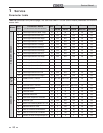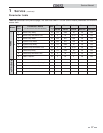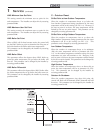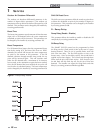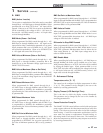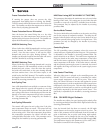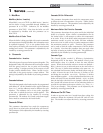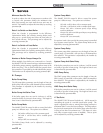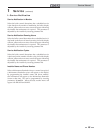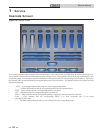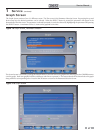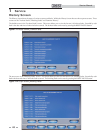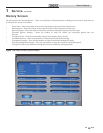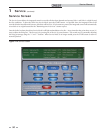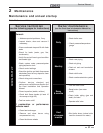
1 Service
Service Manual
24
1 Service
Minimum Next On Time
In order to reduce the risk of temperature overshoot with
a Cascade, this parameter defines the minimum time
delay from starting one unit until the next unit may be
started. The installer can adjust this time delay by accessing
parameter J8.
Rate % to Switch on Next Boiler
When the Cascade is programmed in the Efficiency
Optimization Mode, the currently running boilers must
ramp up to a certain firing rate before the next boiler in
the Cascade will start. This percentage can be adjusted by
accessing parameter J9.
Rate % to Switch off Last Boiler
When the Cascade is programmed in the Efficiency
Optimization Mode, the currently running boiler will stop.
This percentage can be adjusted by accessing parameter
J10.
Number of Boiler Pumps Always On
When multiple Crest boilers are connected in a Cascade,
the SMART TOUCH control can keep a minimum number
of the boiler pumps running, regardless of how many of the
boilers are firing. This is useful in full flow systems where
the system flow is provided by the individual boiler pumps.
This number can be adjusted by accessing parameter J11.
K: Pumps
Boiler Pump Delay
The SH pump delay parameter sets the length of time the
boiler pump will run after a SH demand has been satisfied.
This parameter is adjustable by the installer by accessing
parameter K1.
Boiler Pump Anti-Seize Time
If the boiler pump does not run for 24 hours, it will be
turned on briefly to prevent it from seizing. The length of
time it runs is determined by parameter K2.
Boiler Pump Mode
The SMART TOUCH control is able to control the boiler
pump in 3 different ways. The options are as follows:
1. ON with a call for heat, with a constant speed.
2. ON with a call for heat, with a variable speed
output.
3. Always OFF (not connected).
The Boiler Pump Mode can be adjusted by accessing
parameter K3.
System Pump Mode
The SMART TOUCH control is able to control the system
pump in 5 different ways. The options are as follows:
1. ON with a call for heat, with a constant speed.
2. ON with a call for heat, with a variable speed input.
3. Always ON, with a constant speed, except during
outdoor shutdown.
4. Always ON, with a variable speed input, except during
outdoor shutdown.
5. Always OFF (not connected).
For options 2 and 4, the speed of the system pump is controlled
by a separate control system. The System Pump Mode can be
adjusted by accessing parameter K4.
System Pump Delay
The system pump delay parameter sets the length of time the
system pump (if connected) will run after a SH demand has
been satisfied. This parameter is adjustable by the installer by
accessing parameter K5.
System Pump Anti-Seize Delay
If the boiler pump does not run for 24 hours, it will be turned
on briefly to prevent it from seizing. The length of time it runs
is determined by parameter K6.
HWG Pump Delay
The HWG pump delay parameter sets the length of time the
HWG pump (if connected) will run after a HWG demand has
been satisfied. This parameter is adjustable by the installer by
accessing parameter K7.
HWG Pump Anti-Seize Delay
If the boiler pump does not run for 24 hours, it will be turned
on briefly to prevent it from seizing. The length of time it runs
is determined by parameter K8.
ΔT Set Point
The SMART TOUCH control includes a 0 - 10Vdc output for
controlling the speed of a variable speed boiler pump. The
speed is regulated in order to, among other things, maintain a
minimum delta T across the heat exchanger. This helps reduce
the electrical consumption of the boiler pump when the boiler
is firing at less than its maximum rate. (This feature is active
only when a system supply sensor is installed). This set point
can be adjusted by accessing parameter K9.



